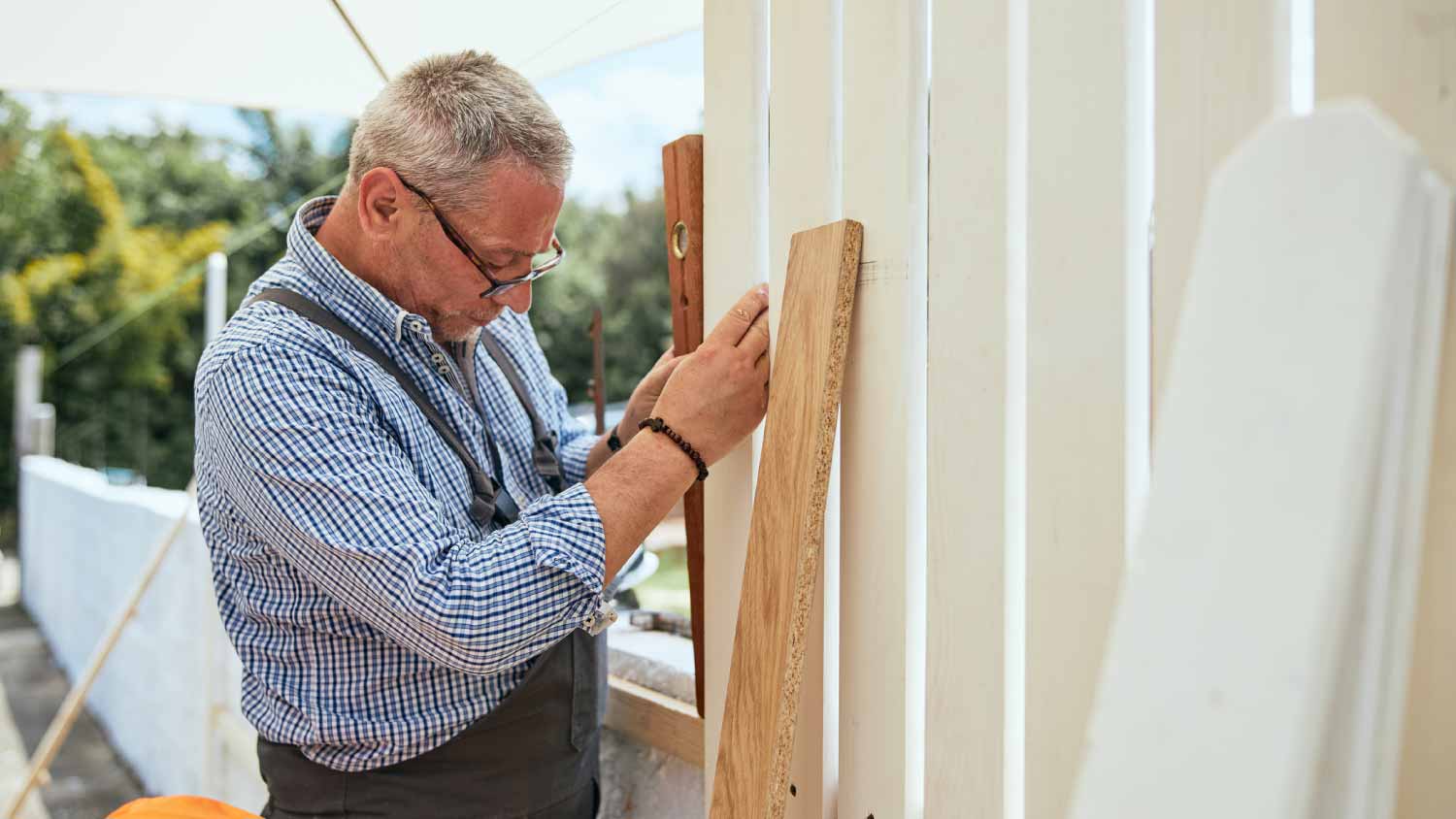
Discover site preparation cost estimates, including average prices, cost factors, and tips to help homeowners budget for their next project.
Get the lay of the land before building that fence


Knowing how to read a property survey for a fence project can provide valuable peace of mind. Property surveys include essential information, like the location of property and utility lines, natural structures, and easements, which can affect the best places to build your new fence. When you first open the survey, you'll see a lot of information at first glance, so follow these seven tips for understanding your property survey.

First, get familiar with the lay of the land. Your property survey should have two components: an illustrated map of the property and a written report detailing the property's various structures and boundaries. Identifying these parts is the first step to how to read a land survey. You might also find information on zoning requirements and other legal restrictions that dictate what you can do on the property.
Once you locate the illustrated map, spread it out and look for the legend. Most legends are located in the bottom corner of the map and include a list of symbols representing various features.
For instance, you might find symbols for buildings, utility lines, fences, and other important structures. Legends also usually have a scale that shows the distance ratio between the map and the property. Understanding the legend and its various components will help you make sense of the map and plan your fence accordingly.

Once you understand the legend, take some time to orient yourself with the direction of the map as it compares to your property. Most maps have a compass to help you understand which way is north, south, etc. The compass is usually near the legend or the bottom corner of the map.
Some map compasses differentiate between magnetic north and astronomical north. Magnetic north refers to the Earth's magnetic field, which is the direction in which a real compass will point. Astronomical north refers to the true direction of the north celestial pole. To find the most precise survey measurements, most surveyors use astronomical north.
The map's scale, usually found in the legend, is critical to making accurate measurements for your fence. The scale indicates the relationship between your actual property and its representation on the map. For instance, a scale might have a 1-inch bar that says it's equal to 20 feet, which means every inch on the map represents 20 feet of your actual property.

Property lines matter a lot when building a new fence. After all, you don't want to accidentally build a fence in someone else's yard. Most maps will indicate property survey lines with an actual line, sometimes labeled with angles and measurements so you can figure out precisely where your property ends.
Oftentimes, fences sit directly on a property line, which can cause uncertainty about who owns it—and therefore who’s responsible for maintenance and repairs. In these instances, we recommend talking to neighbors and clarifying who is ultimately responsible for the fence.
Once you identify your property lines, familiarize yourself with other important structures and features on the map. Key features to make a note of include natural features and any easements.
Easements give a third party, such as companies or government organizations, legal rights to use your property for a specific reason. For instance, utility companies sometimes have easements to access and maintain utility lines in someone's yard. While you can technically build a fence on an easement, you risk getting it taken down if a third party needs to access the area, so it's best to avoid it.
You should also look for natural features on the survey, such as trees, rivers and creeks, and slopes. Depending on the feature, these areas can make it tough or impossible to build a fence.

Finally, take some time to closely read the full report and any notes on the illustration. Some notes may indicate that building on a certain area is a safety or legal issue, so identifying those areas ahead of time can save you from costly issues down the line. The report might also contain guidance on restrictions, hazards, zoning, and any prior work done on the property, all of which can help you identify the best areas to build a fence. If you’re unsure of how to use your property survey to plan your fence, consider hiring a local land survey company to help.
Building a fence costs about $1,700 less on average if you DIY instead of hiring a fencing pro. If you hire a professional, that price will increase to about $3,150 but could range as high as $4,570 depending on your fence’s size, material, and style.
But the higher price tag is worth it if you’re not experienced with building a fence, which requires a lot of physical labor, time, and tools.
Exceptionally handy homeowners who know how to build a wood privacy fence on their own can do it in just a few days, but if you’re new to this type of DIY project, it could take up to a week or longer. Hiring a fencing pro will ensure that your fencing project is finished in about 20 to 30 hours. It also saves you the time it takes to obtain proper building permits, materials, and tools. A fencing pro can also help you understand how close you can build a fence near your property line to ensure you’re not encroaching on your neighbor’s land.
From average costs to expert advice, get all the answers you need to get your job done.

Discover site preparation cost estimates, including average prices, cost factors, and tips to help homeowners budget for their next project.

A land survey can determine your property’s borders and settle property disputes. Learn how much a land survey costs and what can affect the price.

Just bought a plot of land and need to get it build-ready? Learn how much it costs to clear land to gauge your initial budget before you break ground.

What is a property line? Find out everything you need to know about property lines, from easements to where to build a fence and how land surveys work.

Wondering whether you need a land survey or a plot plan? Learn about the differences between the two, when to do each, and what information they provide.

If you've just been told that you need a land survey to continue your project, what time of land survey do you really need? Here are eight main options.